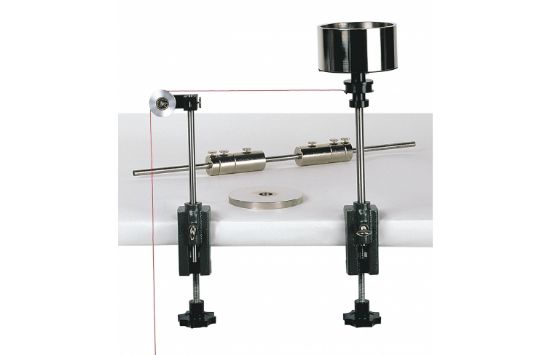The GUNT Rotational Inertia Experimental Unit demonstrates the principles of mass moment of inertia, which describes a rigid body’s resistance to changes in rotational motion. The unit allows practical investigation of how mass distribution and geometry affect rotational dynamics. Mounted on a table-top via two support rods, it offers flexible configuration for various rotating bodies.
Product Features
- Illustrates the concept of mass moment of inertia, defined as the quotient of rotary moment and angular acceleration.
- Enables investigation of how mass and its distribution relative to the axis of rotation affect rotational behaviour.
- Experimental unit includes solid and hollow cylinders for comparing mass moments of inertia.
- System mounted securely to a table-top using two support rods for stability during rotation.
- Rotary axis supported on a rod, accelerated by a falling weight using a pulley, drum, and cable mechanism.
- Generates uniformly accelerated rotational motion for accurate calculation of inertia.
- Time, mass, and acceleration distance measurements used to determine the mass moment of inertia.
- Includes rotating bar with movable masses to study how radius influences mass moment of inertia.
- Supports experiments with various mass systems and geometric configurations.
Benefits
- Provides a hands-on understanding of fundamental rotational mechanics.
- Ideal for studying both theoretical and experimental aspects of rotational inertia.
- Flexible configuration allows for comprehensive comparison of different body geometries and mass distributions.
- Perfect for engineering labs, physics education, and mechanical dynamics training.
Why Choose the GUNT Rotational Inertia Experimental Unit?
This unit offers a detailed and measurable approach to understanding how shape, mass, and radius affect the rotational inertia of bodies. It’s an excellent teaching tool for exploring rotational dynamics and system design in practical, observable ways.

